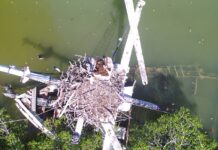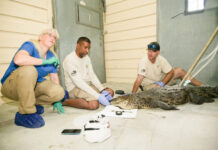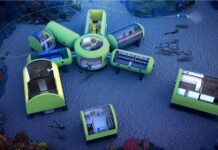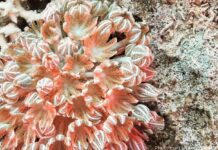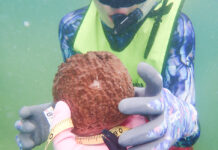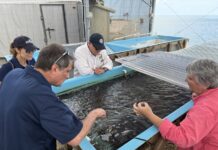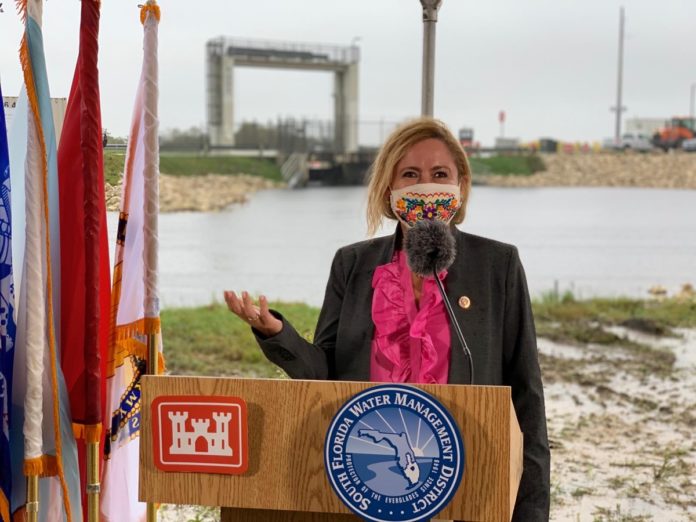
A project designed to improve water flows south to Everglades National Park is underway following a groundbreaking ceremony among federal and state officials on Oct. 21 in western Miami-Dade County.
Shovels hit dirt on the first contract for the Central Everglades Planning Project (CEPP) South, which calls for the construction of culverts and a gap and backfilling an agricultural ditch just north of Tamiami Trail. The contract was awarded to Kiewit Infrastructure South Co., of Omaha, Nebraska for $40,502,895. It’s expected to be complete by the end of 2024.
Officials said the contract is the outcome of years of interagency planning and coordination among the South Florida Water Management District, stakeholders and members of the public who have been collaborating to improve the quantity, quality, timing and distribution of water in south Florida. CEPP is broken down into three phases and is integrated with the EAA Reservoir Project, which will send clean water south to the parched southern Everglades and Florida Bay and reduce damaging discharge events from Lake Okeechobee.
The CEPP-North project adds ways to flow more water into the central Everglades. The CEPP-South project removes barriers to water flow and adds outlet capacity so that the central everglades can be connected to Everglades National Park through the Tamiami Trail bridges. The CEPP New Water project will provide seepage management features that will keep the new water inside Everglades National Park and allow increased flows to Florida Bay.
Among those who spoke during the groundbreaking was U.S. Rep. Debbie Mucarsel-Powell, who acknowledged her pleasure over the Florida delegation’s bipartisanship in securing $200 million for Everglades restoration in 2019. This year, Mucarsel-Powell said they’re well on their way to securing an additional $250 million.
“This funding will go a long way to ensuring that we get more and more restoration projects, like we’re seeing today, online so we can keep the Everglades wet, so we can send fresh water south to Florida Bay, and so we don’t have to suffer nearly as much from the extreme and dangerous harmful algal blooms we’ve been seeing in recent years,” Mucarsel-Powell said.
The president’s Water Subcabinet and Task Force joined the U.S Army Corps, Gov. Ron DeSantis and other representatives in the groundbreaking. One of the task force’s primary goals is “getting water right” by restoring distribution of freshwater. The task force reviewed challenges in implementing key components of CERP (Comprehensive Everglades Restoration Plan) and other priority Everglades restoration projects.
The Trump Administration’s Water Subcabinet consists of six agencies who collectively manage and direct the nation’s water resources. Represented by agency officials at the assistant secretary/administrator-level, the Water Subcabinet is directed to coordinate and collaborate on cross-cutting issues affecting water supply, water quality, water infrastructure, water forecasting, flood control, water sector workforce and use.
“President Trump established this Water Subcabinet so we could more effectively exchange information, coordinate restoration science and resolve conflicts,” said Tim Petty, task force chair who serves as Department of the Interior’s assistant secretary of water & science. “Restoring the Everglades by improving water infrastructure, movement, quality and timing is a top priority.”
DeSantis said his administration has prioritized the protection and restoration of Florida’s environment.
“That’s why we’ve invested nearly $800 million for Everglades restoration projects and have worked to reduce harmful discharges to our estuaries and send more water south, he said. “I was honored to attend (the) groundbreaking and I thank the men and women who work every day to keep Florida’s environment pristine.”









